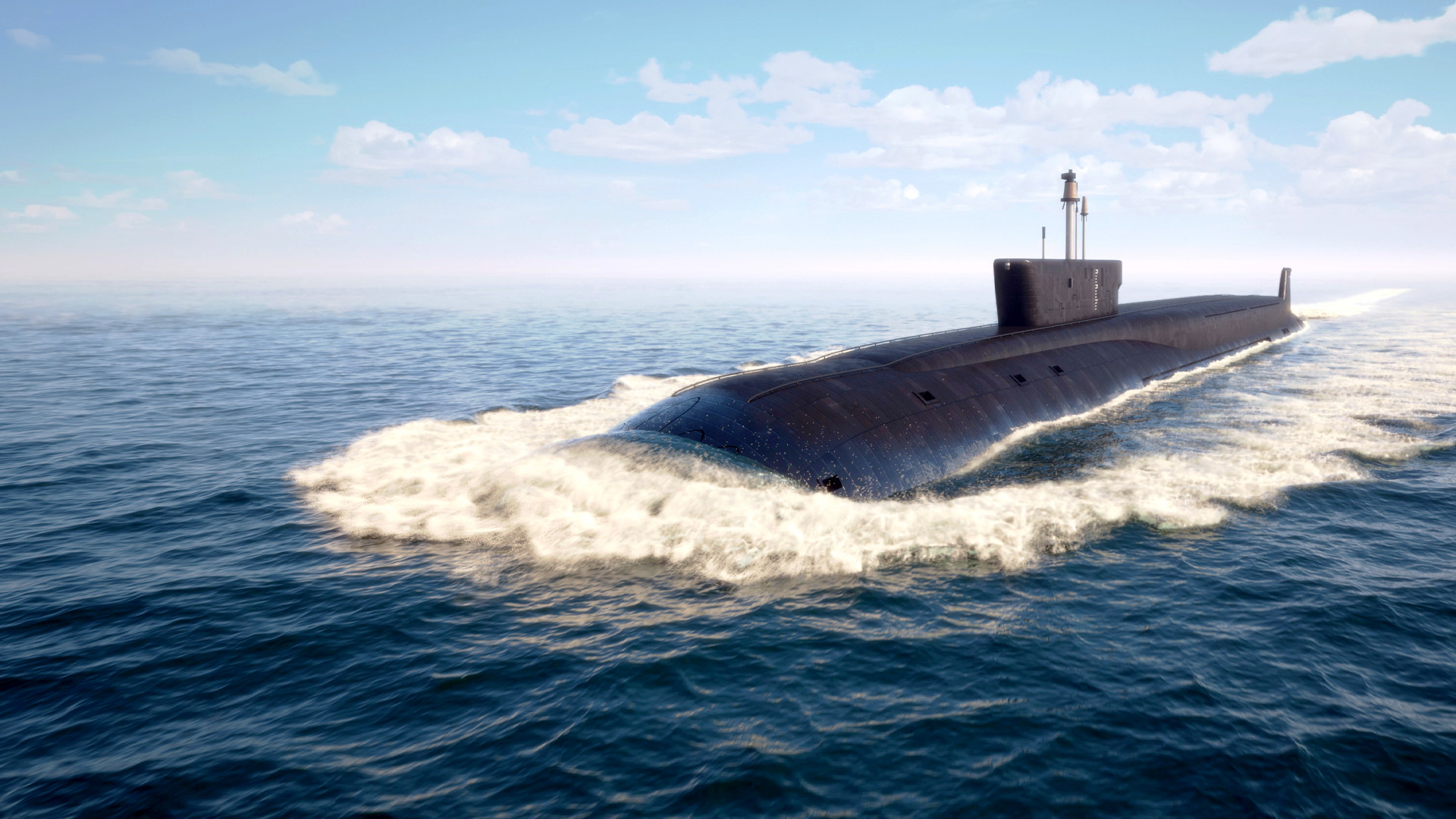What's behind Ukraine's apparent intelligence superiority over Russia? What has OSINT revealed about China's aircraft carrier off the coast of Taiwan and their mysterious new submarine?
Now months into the ongoing Russia-Ukraine conflict, there has been some ability to analyze the bigger picture of intelligence successes and failures; the strong showing of Ukraine’s intelligence apparatus and Russia’s unexpected intel blunders.
We also move our gaze back to the East China Sea where Chinese military activities have been observed, including movement of assets and development of warships.
Lastly, Patrice Tibbs of the CIA’s Open Source Enterprise advocates for open-source intelligence and highlights the intelligence community’s efforts to leverage OSINT alongside more traditional intelligence collection methods.
What we can learn from Ukraine’s intel success
The unexpected success of Ukraine’s wartime intelligence efforts is multifactorial — training and support from NATO, experience, and utilizing open-source resources from the public, among others — are keys to their intelligence achievements thus far. So too, however, are the relative shortcomings of the perceivably well-funded and highly trained Russian intelligence apparatus.
By Russians' own standards, they have fallen short simply because they didn’t expect to have to work this hard. The entire effort may have been based on poor intelligence, and the recovery from those initial failed assumptions has been slow, if not completely lacking.
Many believe it is possible that Putin tipped the scale of some of his military intelligence findings, interpreting them as support for a plan already in motion. Operationally, Russian intelligence has suffered from having a small and poorly organized headquarters. Russian use of unencrypted communications has allowed Ukrainians to intercept radio traffic, giving them the key insight into Russian movements and morale.
Russia’s numerous dysfunctions and Ukraine’s ability to leverage multiple intel sources have resulted in a capable defense and comparable success — something officials should study and learn from.
“Putin believes Ukraine is or ought to be Russian, and whatever passed for intelligence preparation of the environment may have confirmed this in his mind.”
— Abdalla, et. al., War on the Rocks
Chinese aircraft carrier off the coast of Taiwan
A Chinese aircraft carrier has been spotted off the coast of Taiwan. The Japanese Self-Defense Forces have been tracking the carrier in the East China Sea. Moving east of Taiwan, the carrier can be spotted on commercial satellite imagery. According to analysts, its position is about 85 miles south of Japan’s Yaeyama Islands and 160 miles east of Taiwan.
Chinese Carrier Liaoning Strike Group Steaming Near Japan, Says MoD - USNI Newshttps://t.co/zruH5h8hdt pic.twitter.com/AYiDMdHINi
— U.S. Naval Institute (@NavalInstitute) May 3, 2022
Commercial imagery gives analysts an opportunity to observe Chinese naval capabilities.
“Formations like these give trained eyes insight into what Chinese carrier groups will look like and how they will operate in wartime, should it ever come to the Western Pacific.”
— Detresfa_ and Stetson Payne, The Drive
Open-source data prior to Jan. 6
A newly released report from the Government Accountability Office (GAO) reviewed the use of open-source intelligence reports by 10 federal agencies surrounding the attack on the Capitol on January 6, 2021. The report highlights how open-source data, including many social media posts, helped inform government agencies on the potential for violence on January 6 and develop “threat products,” which are a range of reports and assessments pertaining to specific threats.
The FBI and Department of Homeland Security (DHS), among others, were aware of planned events and the potential for violence on that day, according to those threat products.
The agencies developed threat assessments for that day, 38 of which were election-related, and 26 were specifically surrounding events planned for Jan. 6. In those assessments, social media played a key role in helping identify the potential threats and domestic terrorism plots.
The tech wars: US vs. China
China’s intelligence apparatus includes 60,000 open-source collectors, primarily working to collect intelligence on emerging technology. The director of Georgetown University’s Center for Security and Emerging Technology warns the U.S. risks falling behind without a concerted effort to both protect technological information and collect against adversaries like China. During the hearing before the Senate Intelligence Committee, witnesses and Senators discussed the need for a national strategy to safeguard artificial intelligence, biotechnology and quantum computing.
Committee ChairmanMark Warner (D-VA) called American policymakers “complacent” and unaware of how China is outpacing U.S. technological innovations. Warner remarked that China has been open and honest about their plans to displace America as a global superpower, including the U.S. role as a leading tech innovator. Secretary of State Anthony Blinken is expected to announce a national strategy to combat China, but some intelligence committee members still see more to be done.
“The Made in China 2025 policy aims to displace the U.S. standard of living by that year, and China also has a 30- to 50-year systemic plan to supplant the U.S. as a superpower.”
— Dave Nyczepir, FedScoop
China’s new sub
Geospatial intelligence (GEOINT) analysts have caught sight of a new Chinese submarine. The sub, observed off the coast of Huludao, is believed to have cruise missile capabilities. The blurry photos have been shared widely on Twitter and Telegram. Not all components of the submarine can be viewed in the imagery, but measurements are believed to be approximately 110x10 meters.
Some analysts believe the sub may be a nuclear attack submarine. It is no longer visible as of May 3, 2022. The warship is the latest in China’s attempts to bolster its military equipment.
“OSINT specialists around the net believe the submarine may be a Type 093 or Type 093G Shang class nuclear attack sub, with the latter variant being fitted with vertical launching systems for YJ-18 anti-ship missiles and CJ-10 cruise missiles. ”
— Andy Wolf, War is Boring
Standardizing OSINT
As OSINT becomes popularized in the intelligence community, common standards are being proposed for how to use open-source information. Despite having “proven itself over and over,” according to Patrice Tibbs of the CIA, the adoption has been slow among intelligence agencies. More traditional forms of intelligence, such as geospatial and signal, still dominate the IC’s collection priorities and have more rigidly defined standards of use.
The conflict in Ukraine has been partially responsible for the tide shift on OSINT. The explosion of open-source information and amateur sleuths has led to a resurgence in commitment to what OSINT can achieve. Some proponents, like Tibbs, think it is finally starting to be taken more seriously.
“Tibbs said the most difficult challenge for OSINT is 'getting everybody to agree on the direction.' She also said ensuring the intelligence community has the technology infrastructure to support OSINT is important.”
— Federal News Network
Every other week, we collect OSINT news from around the world. We continue to keep a close watch on Russia's war in Ukraine, especially on Twitter, as well as geopolitical updates from China. We’re also gathering information on cyberthreats, federal intelligence strategies and much more. Find us on Twitter and share the OSINT news you’re keeping up with.
Tags OSINT news

